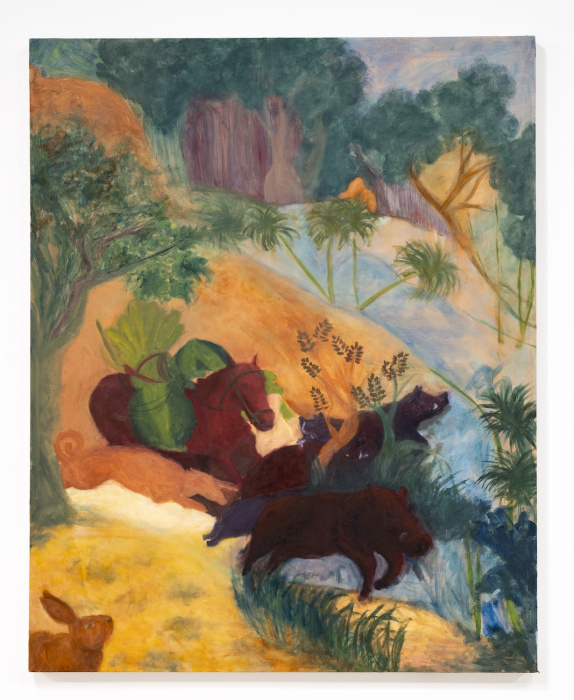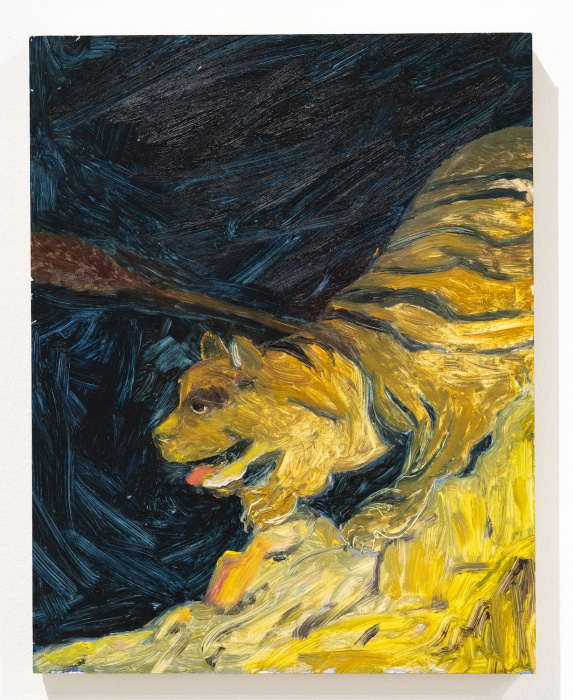I arrived at art making after decades of concentrating on logic and efficiency. I focused on structured thinking and rational thought as a media industry executive and as a postmodern feminist art historian. Today, while I think critically about my identity and the effects of late-stage capitalism on our current condition, my practice is about the urgency of making a mark. Drawing on my South Asian background, while also challenging expectations of the model minority, I use paint to process and record my history. In confrontation with our digitally driven world, I delight in the illogic and inefficiency of physical materials. What manifests in my work is a cacophony--my references to Indian miniature paintings, my fascination with color, and my negotiation of the tension between figuration and abstraction.
I metabolize styles, techniques, and references to manifest paintings that are temporal investigations of the history of art. I go back in history to pull it forward, address the cyclicality of time and examine my contemporaneity. I am particularly drawn to mythological stories, asuras (demigods with good and bad qualities) and animals. I use vibrant, synthetic colors and I infuse my paintings with subtle humor and a childlike sense of curiosity and wonder. With figuration, I am using allegory and parables’ ability to question the adherence to authoritative, powerful, and heteronormative structures. I find that abstraction creates a potent space for radical imagination. Moving between abstraction and figuration without a clear narrative throughline means that my work is an act of self-invention. Ambiguous and elusive, this way of worldbuilding invites the viewer to engage freely and creatively in his or her own search for meaning and relevance.
Last name
Grandhi




